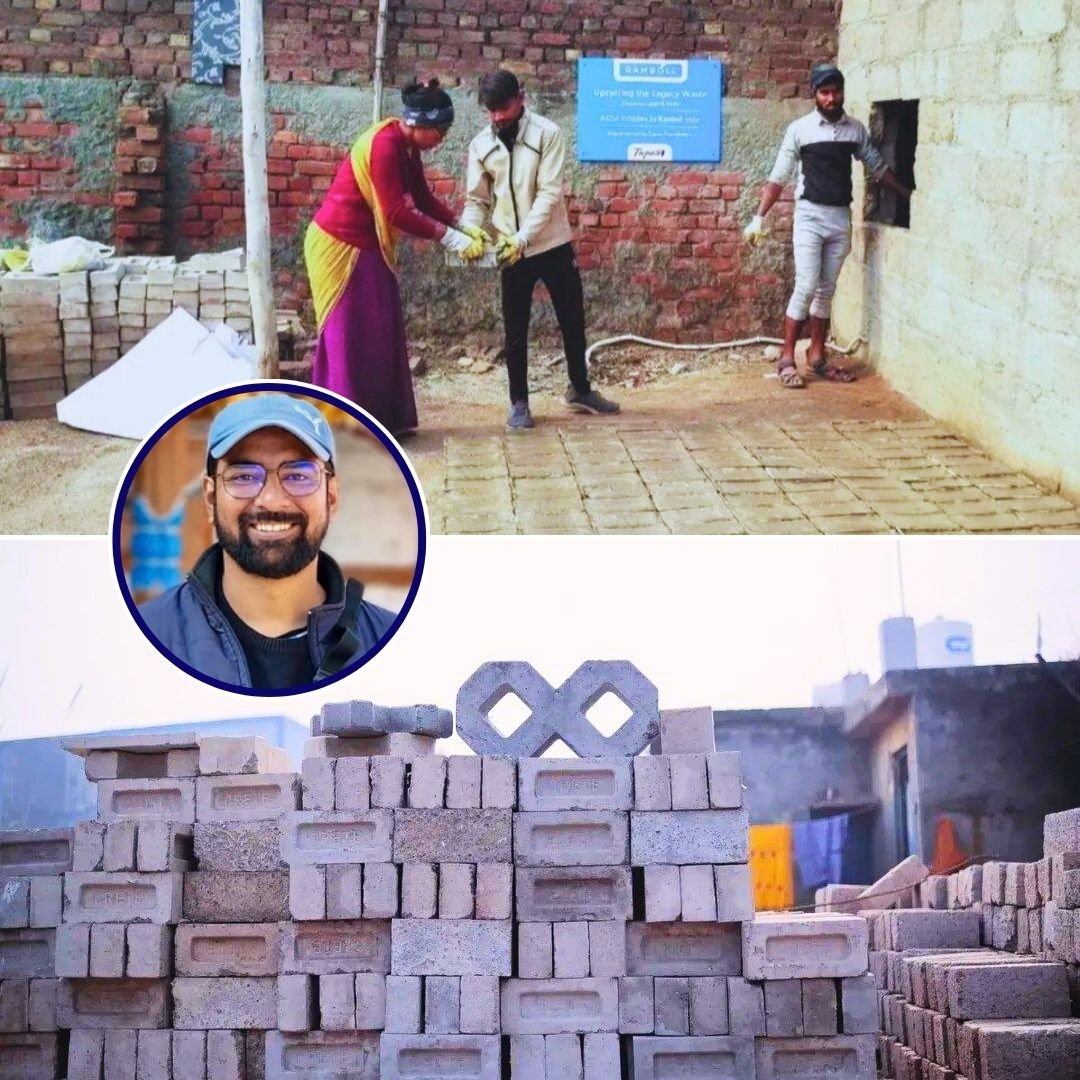
A New Beginning at Bhalswa Landfill
Delhi’s Bhalswa landfill, once infamous for toxic fires and garbage mounds taller than Qutub Minar, is now seeing a unique transformation. Tapas Foundation, in partnership with Ramboll India, has converted 60 tons of waste into 30,000 sustainable bricks. This project is part of a larger effort to address the capital’s staggering waste crisis, where over 11,000 metric tons of solid waste are dumped daily.
The Waste-to-Brick Process in Detail
This initiative isn’t just symbolic—it’s rooted in science and circular economy principles:
- Material Mix: 10% cement blended with 50% recycled aggregates and 40% recycled sand/ash collected from landfill sites.
- Brick Formation: The mixture is pressed into moulds and subjected to water curing, avoiding the high CO₂ emissions of traditional kilns.
- Quality Assurance: Bricks undergo rigorous testing, including compressive strength and durability checks, to ensure they meet construction standards.
Why It’s a Game-Changer for Delhi
- Landfill Burden Reduced: Diverting 60 tons of waste may seem small, but scaled-up adoption could shrink Delhi’s massive landfill heaps.
- Pollution Control: Reduces methane emissions and toxic fires that plague landfill sites like Bhalswa, Okhla, and Ghazipur.
- Social Impact: The project has generated green jobs, with women being trained in eco-brick manufacturing.
- Sustainable Building Material: Replaces traditional fired bricks that consume topsoil and emit high levels of carbon.
The Larger Waste Challenge
Delhi has three overflowing landfills, collectively holding over 280 million tons of waste. Even though multiple construction and demolition (C&D) waste recycling plants exist, utilization remains low due to weak demand, lack of awareness, and inconsistent policy enforcement. Authorities like the Commission for Air Quality Management (CAQM) are now pushing for bio-mining, methane tracking, and faster legacy waste processing to support such green solutions.
Global Inspirations and Indian Context
- Hong Kong’s Eco-Block: Uses recycled glass and aggregates, with surfaces that can break down pollutants like nitrogen oxides.
- India’s Fly Ash Bricks: Made from thermal power plant residue, these are already popular in many states for their strength and cost-efficiency.
- Beyond Bricks: Globally, experiments are on with bricks made from textile sludge, plastic, and even crop waste.
What Needs to Happen Next
- Policy Push: Mandatory use of recycled bricks in government projects.
- Awareness Campaigns: Builders and contractors must be educated on the long-term benefits of eco-bricks.
- Scaling Up: Pilot projects like this need larger investment and replication across India’s urban centers.
Final Thought
Turning waste into bricks is more than an innovative project—it’s a vision of Delhi’s sustainable future. If adopted on scale, these eco-bricks could help dismantle the city’s towering landfills, clean its air, and set an example for other Indian cities battling similar crises.
FOR MORE BLOGS – beyondthepunchlines.com
Meta Title (60): Delhi Turns Landfills into Eco-Friendly Bricks
Meta Description (160): Delhi converts 60 tons of landfill waste into 30,000 eco-bricks—cutting pollution, creating green jobs, and paving the way for sustainable construction.

 Add to favorites
Add to favorites







